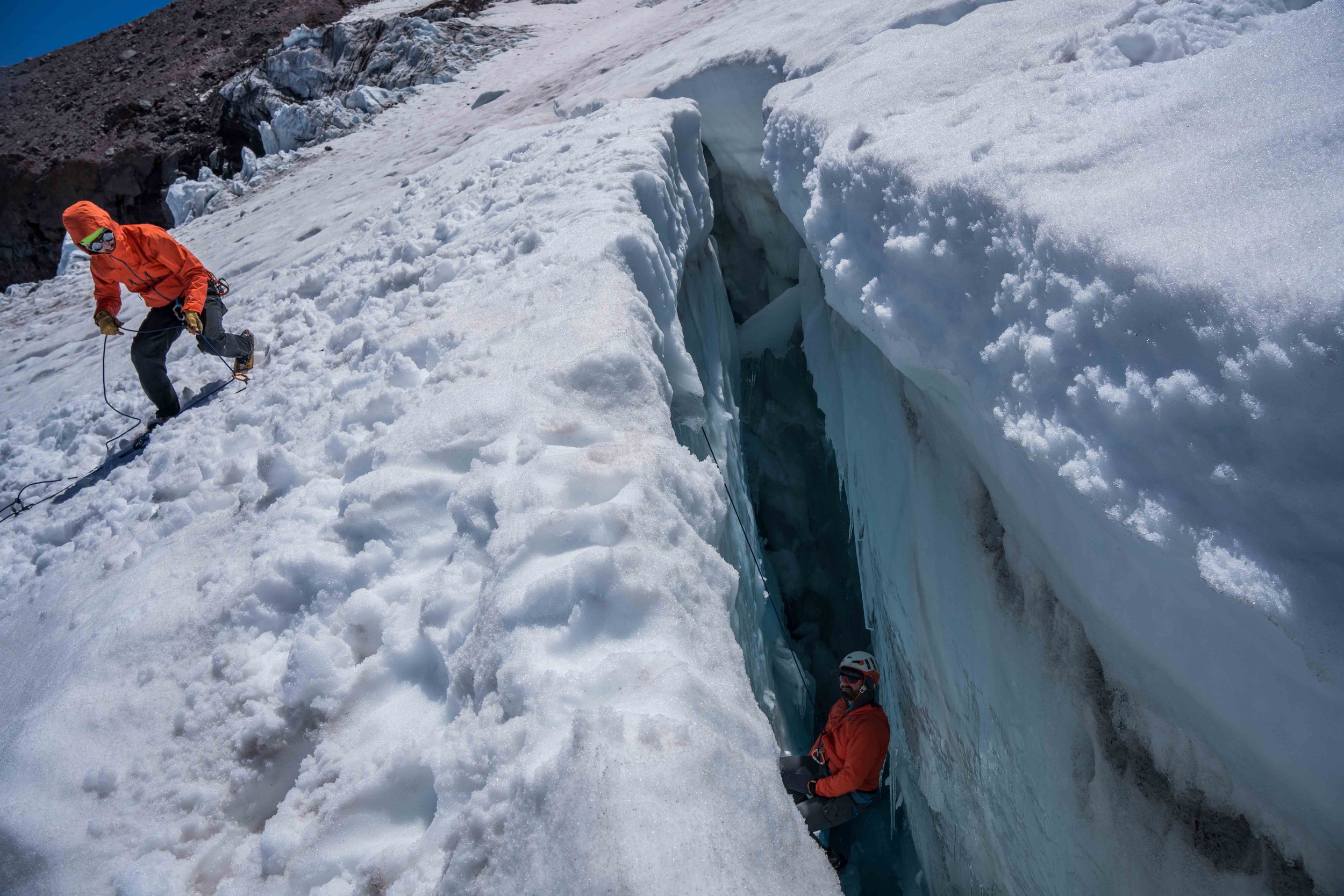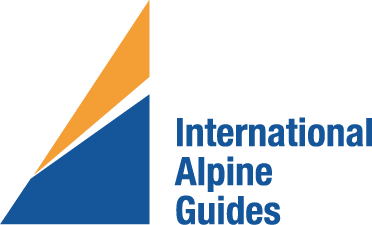The Proper Steps to Begin The Sport of Mountaineering
/You’ve seen the photos, perhaps read the stories and seen those big, shiny peaks beckoning in the distance. You yearn for more adventure and challenge. And now you’ve finally made the decision,,, I want to climb mountains! Not just walk ups, but those bigger peaks that require some technical skills such as using ice axe crampons or perhaps some rock climbing. And then you may be thinking, “Now what?”. How do you make those first steps into the sport of mountaineering?
Well, the very first step would be to ensure you have the physical conditioning to be able to climb a big mountain. Make no mistake, successfully mountaineering is not easy. Even beginner mountaineering routes can be very strenuous and then add altitude into the mix and you will soon realize you need perhaps more strength than you thought. Aerobic shape is key here. You don’t move fast climbing mountains but you’ll need the strength to go all day. Also, going up in altitude raises your resting heartbeat so the lower you start with your heart beat the better you’re going to feel and the less winded you’ll get. Gym fit is fine but is generally not good enough.
You also need the skills to move over the face of the Earth. What I mean by that is not sidewalks, tracks or stair steppers. I’m talking moving over the natural, uneven earth. Slopes with rocks, slopes with boulders, sandy slopes, steep loose slopes, slippery snowy slopes, all of it. It takes getting used to if you have just hiked on well maintained trails (If there’s a well maintained trail to the top of your mountain, it’s not mountaineering!). So get off the trail and hike on the untamed earth with all it throws at you. No need to go too steep here and you need to keep it safe. Don’t go onto any slopes that are steep enough to cause rockfall and keep it in familiar zone so as not to get lost or disoriented. You just need to develop the motor skills for moving on uneven terrain. When you develop this, you’ll find yourself using far less energy on those mountaineering routes.
Then there’s the technical skills. Knowing how to properly use crampons and ice axe and perhaps the use of ropes for steeper rock climbing is something to be learned from a professional or a trusted expert mountaineering mentor. Using mountaineering equipment without proper instruction and without knowing what you don’t know can be far more dangerous than not using it at all. Now of course I’m going to suggest using a trained and vetted professional mountain guide because you know you’re getting the proper climbing instruction, but if you’re lucky enough to have a friend whom you trust who is very experienced at mountaineering and willing to teach you, then that path can work well also. In the absence of an experienced friend, a mountaineering course is a great place to start once you’ve developed the physical conditioning and off trial hiking skills.
Once you have has the taken a mountaineering course from a qualified guide or received the proper mountaineering training from a trusted expert, the next step is to gain experience in the mountains. We are talking baby steps here, dont bite off more than you can chew. Perhaps a trusted mentor can take you out on a mountain climb or you could hire a mountain guide to take you on a bucket list mountaineering objective of yours. In the absence of existing climbing partners, you will need to establish a base of climbing partners with which you can go mountain climbing. This can happen in many forms… you can check with your network of friends and acquaintances to see if anyone else is interested in mountaineering . If so, maybe they can take a mountaineering course with you. If you do find a climbing partner, it’s important that you get along and have the same thoughts and ideas about safety and objectives, This is a person you will want to spend time with in the mountains.
Keep your first unguided mountaineering objectives well below for skills level and well within your comfort level. Starting off on an easy scrambling peak in the High Sierra without much technicality is a great way to start gaining what we call “mountain sense”. If snow climbing is more your thing, a beginner climb of Mount Shasta with a solid partner could be very appropriate once you both have had the proper training in ice axe and crampon use. Bottom line is keep it simple and keep it safe and progress in baby steps. To up your climbing experience level, hiring a guide from time to time to take you on routes a bit above your un-guided experience level is a great way to gain additional experience and mountaineering instruction. you can then go back a few notches on your unguided mountain climbswhile all the while progressing forward.
If you’ve chosen to embark on the journey of climbing mountains, I can assure you that you have many rewarding and challenging days in your future!
by Dave Miller
IMFGA certified mountain guide
For mountaineering courses in California check out our:
Intro to Mountaineering Course This 3-day High Sierra beginner mountaineering course is a great introduction into mountaineers for those with some backpacking experience
6-day Alpine Mountaineering Course This is a very in-depth introductory technical mountaineering course the covers all aspects of mountaineering inlcuding alpine rock climbing and steep snow climbing.
3-day Shasta Summit Climb Not just a summit climb, we also teach all the basics of using ice axe and crampons and then applying those skills on Calfornia’s 14,000 foot volcano
4-day Mount Shasta Mountaineering Skills Seminar A more in-depth course on climbing big snowy peaks with an introduction into glacier climbing. Designed for beginners who are in excellent physical conditions. Conducted the North side of Mount Shasta
Intro to Winter Mountaineering The winter version of our intro to mountaineering course, this 4-day course covers all the mountaineering skills to go out in a full winter environment including winter camping, using ice axe and crampons and avalanche awareness.










